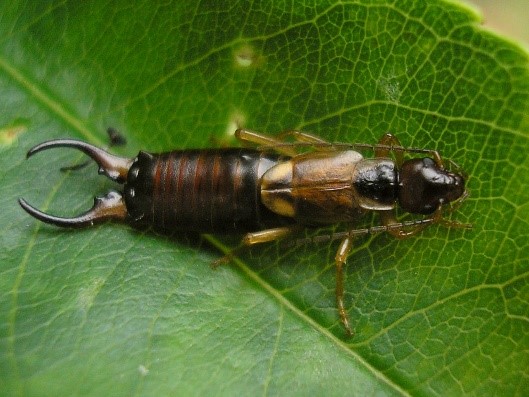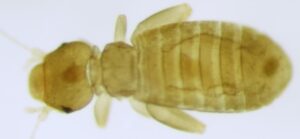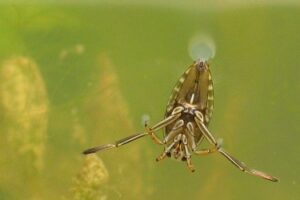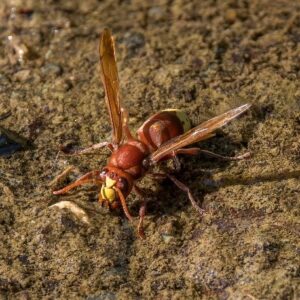Earwigs:
Common European earwig
General Description
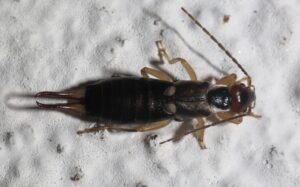
Female. Credit: Luis Miguel Bugallo Sánchez |
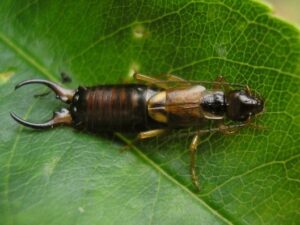
Male. Credit: Pudding4brains |
- The European earwigs are about 1.2–1.5 cm long.
- They have elongated flattened brownish-colored bodies, with scissor-like tail.
- They have two pairs of wings and a pair of forceps-like cerci.
- The antenna consists of 11–14 segments, and the mouth parts are of the chewing type.
- Adult males are polymorphicin body weight and head width, as well as cercus length and width.
- The male forceps are robust and broadened, while the female forceps are about 3 mm long and are less robust and straighter.
- The cerci are used during, feeding mating, and self-defense.
Life Cycle and Common Characteristics
- A male finds prospective mates by olfaction (smelling).
- The mating process occurs frequently among clustered individuals.
- A single mating enable the female to lay fertilized eggs.
- The female earwig lays a clutch of about 50 eggsin an underground nest in the autumn.
- The female enters a dormant state about 5 mm below the surface of the ground and stays in the nest with the eggs.
- Adults survive in cool, moist habitats.
- They spend the daytime living on organic matter and waste found in the soil around plants and feed on some plant tissues such as flowers, fruits, and buds, insects, and the remains of dead animals.
- They appear at night in the desert, gardens, and houses near gardens.
Damages and Economic & Medical Implications
- Common European earwigs cause significant damage to crops, flowers, and fruit orchards when at high population levels.
- They are considered beneficial insects for their use in the pest management of other insects. They are natural predators of a number of other agricultural pests,
- Humans are not very fond of common earwigs because of their foul odor and annoying propensity to aggregate together in or near human dwellings.
- There is no indication in scientific sources of the toxicity of this insect and its effect on humans, except that it stings similar in effect to the pain of a bee sting.
- They may parasitize the habitats of bats and mice and may be vectors for diseases transmitted by these types of mammals.
- One of the myths and legends of Europeans is that earwigs crawl to enter the human ear and feed on the eardrum, and for this reason, it is called in some sources ear piercing or ear insect. The superstition goes that this insect only enters the ear of the elderly, and that is why it was called (the old man’s needle).

